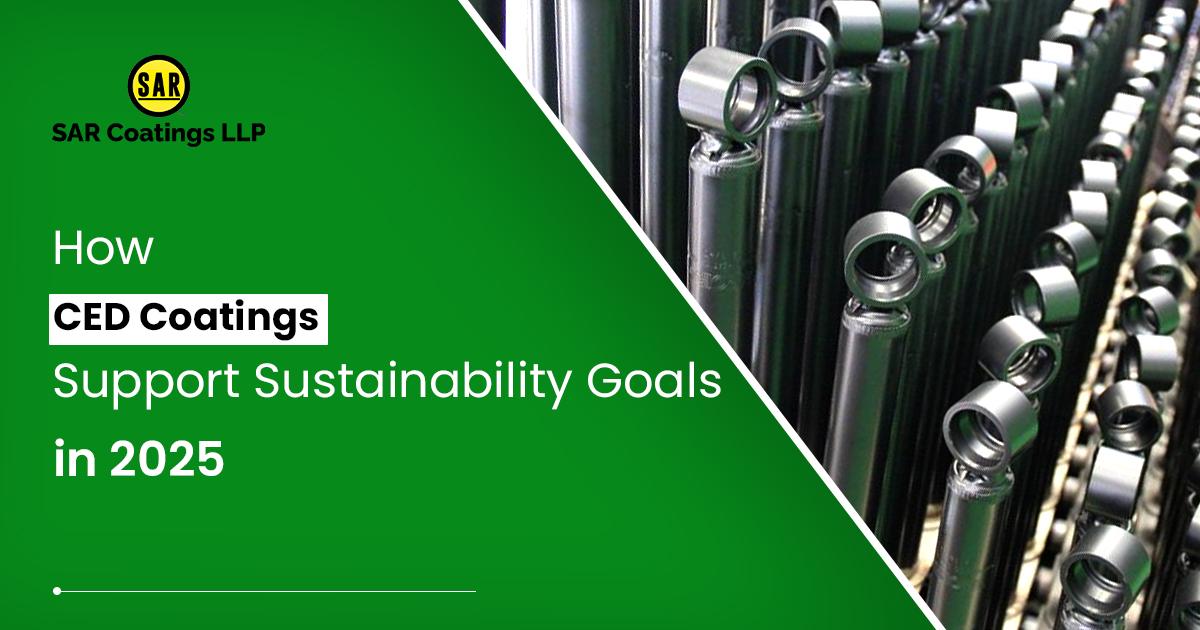Notifications

5 minutes, 16 seconds
-278 Views 0 Comments 0 Likes 0 Reviews

As we approach 2025, industries worldwide are facing increasing pressure to meet ambitious sustainability targets. One technology rising to this challenge is Cathodic Electrodeposition (CED) coating - an innovative solution that's transforming how we protect metal surfaces while supporting environmental goals.
At its core, CED coating (also called e-coating) works like a precision-guided shield for metal components. Using an electrochemical process, it creates an ultra-thin, incredibly durable protective layer that outperforms traditional coating methods in both performance and eco-friendliness.
Imagine painting a complex metal part with perfect coverage every time, without drips or uneven spots. That's what CED coating delivers. The process achieves:
95-98% material utilization (vs. 60-70% with spray painting)
Virtually no overspray waste
Consistent thickness across entire surfaces
This precision means manufacturers use less material while getting better protection - a win-win for both budgets and the environment.
Traditional coatings often release harmful volatile organic compounds (VOCs) into the atmosphere. CED coatings change the game by:
Containing up to 90% fewer VOCs
Using water-based formulas instead of solvent-based ones
Reducing workplace health risks for employees
For factories looking to improve their air quality metrics, switching to CED can make a significant impact.
The production process itself is designed for sustainability:
Cures at lower temperatures (saving 30-40% energy)
Requires shorter curing times
Uses automated systems that optimize energy use
These efficiencies help manufacturers reduce both their utility bills and carbon emissions simultaneously.
Sustainability isn't just about production - it's about longevity. CED-coated products:
Resists corrosion for 10-15 years in harsh conditions
Withstands extreme weather, UV exposure, and chemical contact
Maintain protective qualities far longer than conventional coatings
This extended lifespan means fewer replacements, less material consumption, and reduced waste over time.
At end-of-life, CED-coated materials offer recycling advantages:
Automotive parts can be fully recycled without coating interference
No toxic residues complicate recycling processes
Supports closed-loop manufacturing systems
Also Read: How CED Coatings Support Sustainability Goals in 2025
Real-World Applications Making a Difference
Major automakers now use CED as their primary corrosion protection method because it:
Adds minimal weight (critical for electric vehicles)
Allows for complete recycling of vehicle frames
Meets stringent environmental regulations
Wind turbines and solar farms benefit from:
Saltwater corrosion resistance for offshore installations
UV protection for decades of exposure
Minimal maintenance requirements in remote locations
Bridges and steel structures gain:
3-5x longer maintenance intervals
Protection from urban pollution and weather extremes
Reduced lifetime environmental impact
As environmental regulations tighten and eco-conscious consumers demand greener products, CED coating technology positions manufacturers to:
Meet stricter emissions standards
Achieve sustainability certifications
Reduce operational costs through efficiency
Future-proof their production processes
Companies adopting these solutions now will be ahead of the curve when 2025's requirements take full effect.
CED technology represents one of those rare innovations that delivers better performance while actually reducing environmental impact. As we move toward 2025's sustainability milestones, it offers manufacturers a practical, scalable solution that aligns business objectives with ecological responsibility.
The data shows this isn't just greenwashing - the measurable reductions in waste, emissions, and energy use make CED coatings a smart choice for any business serious about sustainability. As the technology continues to advance, we can expect even greater environmental benefits in the years ahead.
For organizations looking to make immediate progress on their 2025 sustainability goals, upgrading to CED coating systems presents one of the most impactful and practical opportunities available today. The question isn't whether to adopt this technology but how quickly the transition can be made.

